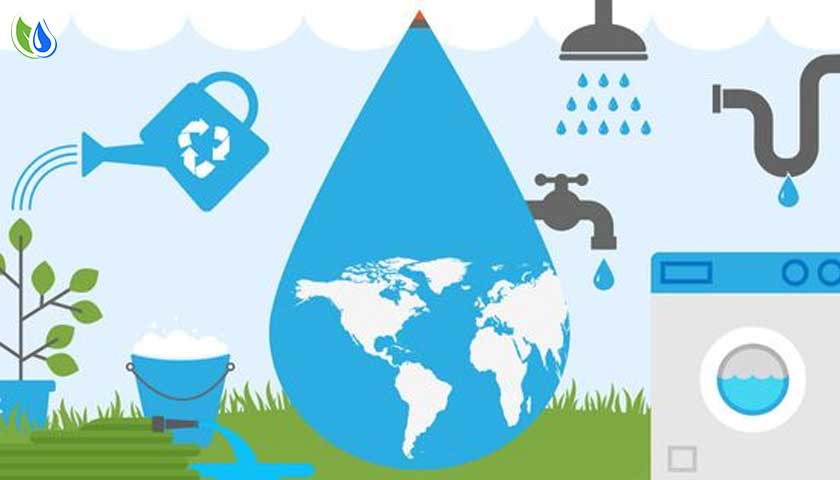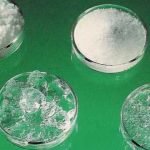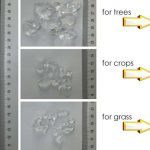
Maximizing Water Efficiency with Aquasorb: A Comprehensive Guide
Water is a precious resource, and in an era where environmental sustainability and efficient resource management are paramount, products like Aquasorb are gaining prominence. Aquasorb, a brand synonymous with water-absorbent polymers, is revolutionizing water management practices in agriculture, horticulture, and landscaping. This article delves into the world of Aquasorb, exploring its composition, applications, benefits, and the role it plays in addressing critical global challenges.
Understanding Aquasorb: The Water-Absorbent Polymer
Aquasorb is a trade name representing a class of superabsorbent polymers (SAPs) or hydrogels. These polymers have a remarkable capacity to absorb and retain significant quantities of water, making them invaluable in various fields. The key to their water-absorbing prowess lies in their molecular structure, which allows them to swell and retain water many times their dry weight.
Typically, Aquasorb products are formulated from cross-linked polymers, which can be derived from natural sources or synthesized chemically. The polymer chains form a three-dimensional network capable of trapping and holding water through physical interactions and chemical bonding. As a result, Aquasorb products transform into gel-like substances when they come into contact with water, effectively capturing and storing moisture.
Applications of Aquasorb
The versatility of Aquasorb has led to its wide range of applications:
1. Agriculture
In agriculture, water conservation is paramount. Aquasorb is used to improve soil moisture levels, particularly in arid regions or during droughts. By incorporating Aquasorb into the soil, farmers can reduce the frequency of irrigation, minimize water wastage, and promote healthier crop growth. These polymers release water slowly over time, ensuring a consistent water supply to plants, even during dry spells.
2. Horticulture
Aquasorb is a game-changer for landscapers, gardeners, and horticulturalists. It enhances the water-holding capacity of potting soil, reducing the need for frequent watering of potted plants and improving the overall health of greenery. This not only saves water but also makes it more convenient for individuals to maintain their gardens and indoor plants.
3. Erosion Control
In the realm of erosion control, Aquasorb can be employed to stabilize slopes and prevent soil erosion. By mixing Aquasorb with topsoil or hydroseeding materials, the polymers help the soil retain moisture, reducing the likelihood of erosion during heavy rainfall or wind.
4. Environmental Restoration
Aquasorb plays a crucial role in restoring damaged ecosystems. When applied to barren or ecologically sensitive areas, it assists in establishing vegetation by providing a consistent water supply. This is particularly vital in reforestation efforts and the rehabilitation of ecosystems affected by wildfire or other disturbances.
5. Mining and Construction
Aquasorb is also utilized in mining and construction activities, where controlling dust is essential. By incorporating Aquasorb into dust suppression solutions, these industries can reduce airborne dust particles, enhancing air quality and worker safety.
Benefits of Aquasorb
The advantages of Aquasorb extend beyond water conservation:
1. Water Efficiency
One of the most significant benefits of Aquasorb is its capacity to reduce water consumption. By retaining and slowly releasing water, it minimizes the need for frequent irrigation, leading to substantial water savings.
2. Improved Plant Health
For agricultural and horticultural applications, Aquasorb promotes healthier plant growth. Consistent moisture levels reduce stress on plants and improve nutrient uptake, ultimately leading to more robust and productive crops and greenery.
3. Environmental Sustainability
Aquasorb aligns with global efforts to conserve water and reduce environmental impact. Its use in agriculture, landscaping, and reforestation helps to mitigate the effects of climate change and habitat degradation.
4. Economic Benefits
By reducing water and maintenance costs, Aquasorb can lead to economic savings for businesses, farmers, and homeowners. The initial investment in Aquasorb products often pays off through lower water bills and improved crop yields.
Best Practices for Using Aquasorb
To maximize the benefits of Aquasorb, it is essential to follow best practices:
1. Proper Application: Carefully follow the manufacturer’s recommendations for product dosage and application methods. The correct incorporation of Aquasorb into the soil or growing medium is crucial for optimal results.
2. Soil Testing: Conduct soil tests to determine the moisture-holding capacity of your soil. This will help in determining the appropriate quantity of Aquasorb needed.
3. Irrigation Management: Adjust irrigation practices to account for the water-holding capacity of the Aquasorb-treated soil. Reduced watering frequency may be required.
4. Environmental Considerations: Be mindful of potential environmental impacts. Aquasorb is generally safe, but it’s important to use it responsibly and avoid overuse.
5. Storage and Handling: Store Aquasorb products in a cool, dry place and follow safety guidelines when handling them.
Aquasorb, with its remarkable ability to absorb and retain water, is making a positive impact on water conservation, agriculture, horticulture, and various industries. Its role in promoting sustainable water management practices is crucial in a world where water resources are increasingly under stress. As technology and research continue to advance, we can anticipate further innovations in Aquasorb products and their applications, leading to more efficient and eco-friendly water use in the future. Embracing Aquasorb is not only a practical choice for businesses and individuals but also a significant contribution to global water conservation efforts.




